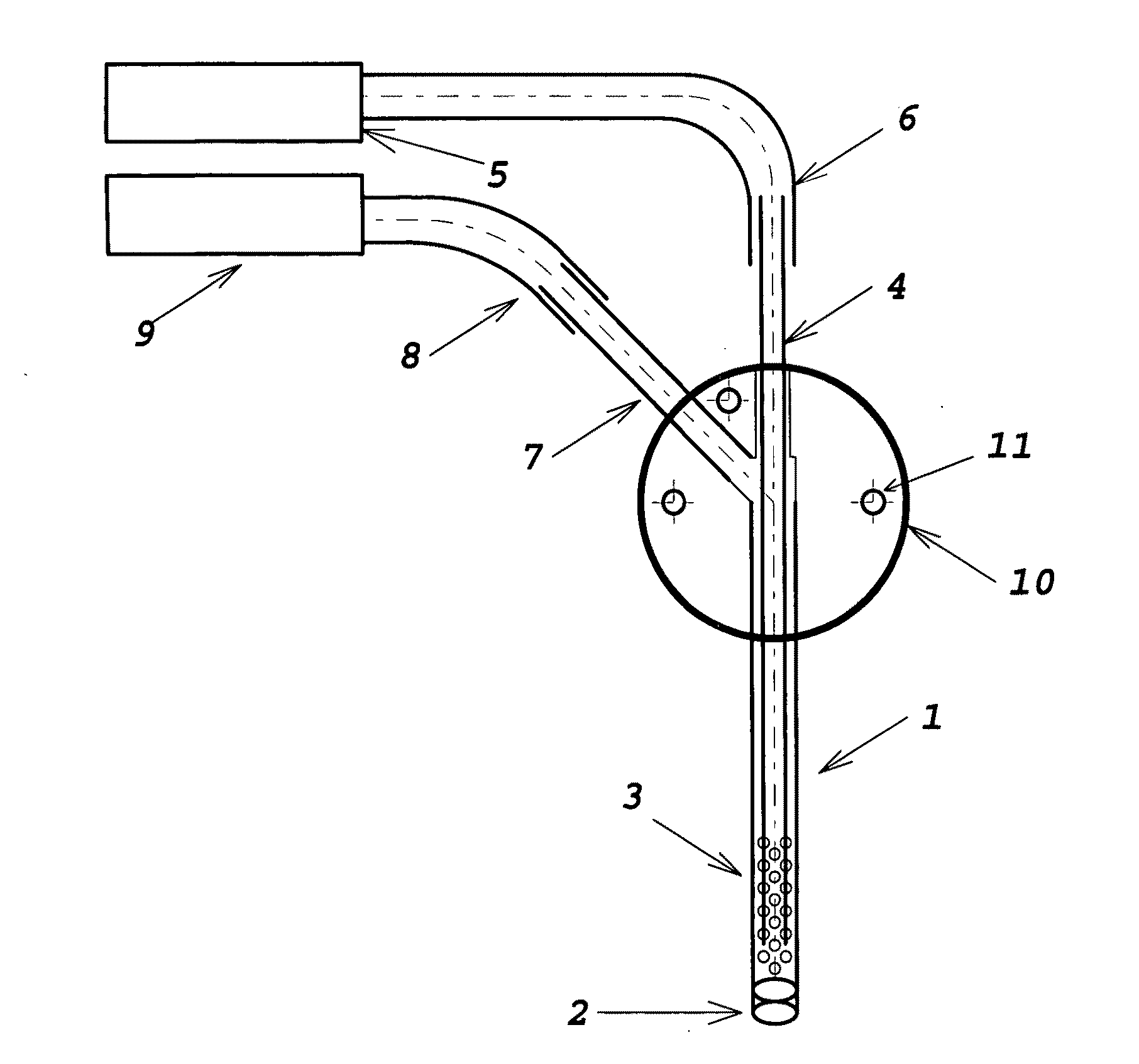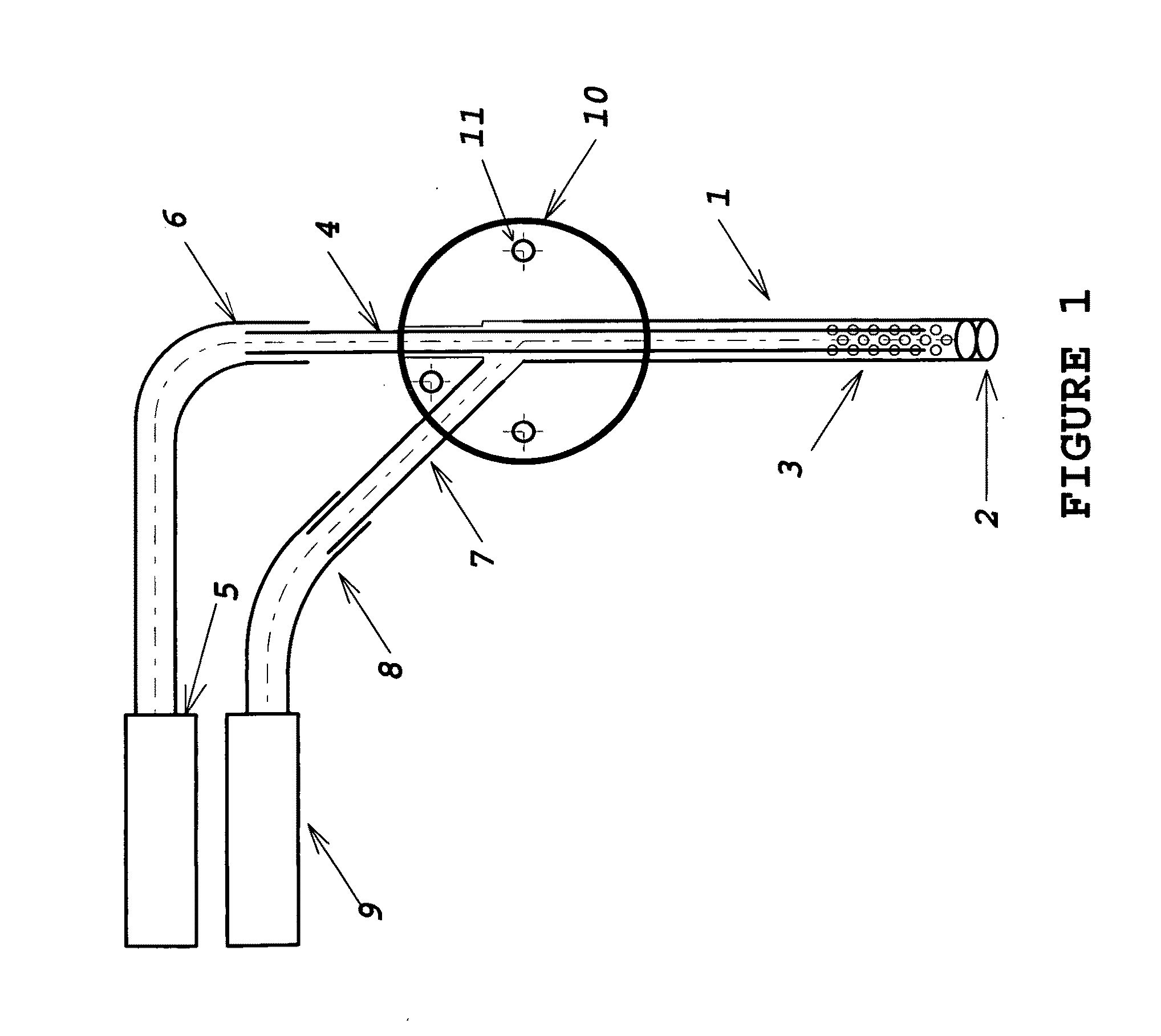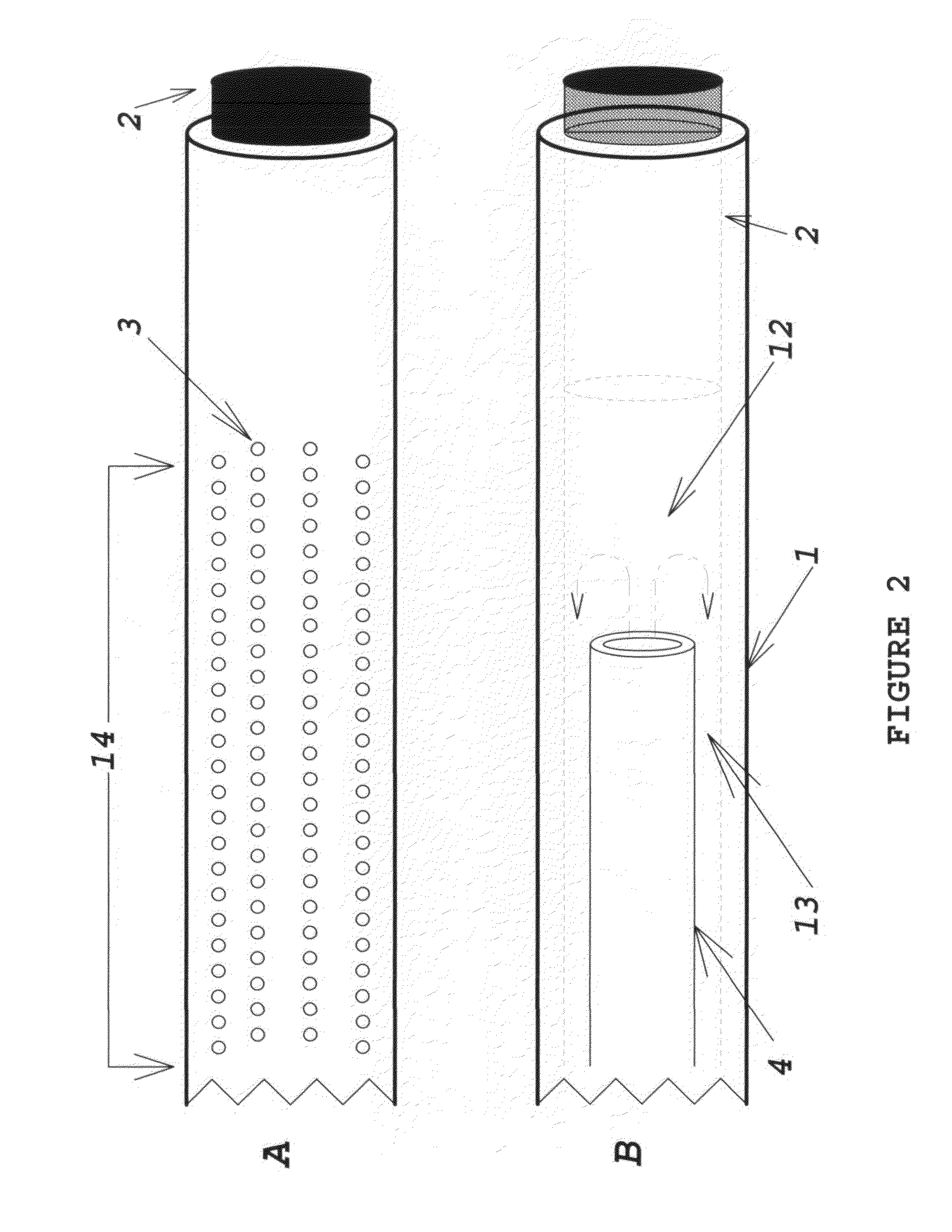Laser-perforated intra-parenchymal micro-probe
a micro-probe and laser-perforated technology, applied in the field of medical and neuroscience instruments for research, clinical diagnostics and therapy, can solve the problems of frequent clogging of cannulae, inability to collect and deliver large particles,
- Summary
- Abstract
- Description
- Claims
- Application Information
AI Technical Summary
Benefits of technology
Problems solved by technology
Method used
Image
Examples
Embodiment Construction
Intra-Parenchymal Micro-Probe Structure
[0012]The device comprises multiple sections of thin-wall tubing, retained in intersecting bores in a multi-port manifold body. The manifold and tubing provide access for fluid extraction or delivery. The manifold body may be fabricated from stainless steel, titanium, ceramic, glass, acetyl, or some other biocompatible material. The tubing must also be a biocompatible material, not necessarily the same as that of the manifold body. Appropriate material selection allows fabrication of probes which are compatible with MRI and other diagnostic procedures. The laser-perforated design has the ability to size-selectively exclude materials from extracted or delivered fluid; it may also minimize tissue damage at the sampling or delivery site by distributing the fluid volume interface over multiple small orifices covering a much larger area than a plain needle tip.
[0013]FIG. 1 illustrates a preferred embodiment of the invention. The functional portion o...
PUM
 Login to View More
Login to View More Abstract
Description
Claims
Application Information
 Login to View More
Login to View More - R&D
- Intellectual Property
- Life Sciences
- Materials
- Tech Scout
- Unparalleled Data Quality
- Higher Quality Content
- 60% Fewer Hallucinations
Browse by: Latest US Patents, China's latest patents, Technical Efficacy Thesaurus, Application Domain, Technology Topic, Popular Technical Reports.
© 2025 PatSnap. All rights reserved.Legal|Privacy policy|Modern Slavery Act Transparency Statement|Sitemap|About US| Contact US: help@patsnap.com



